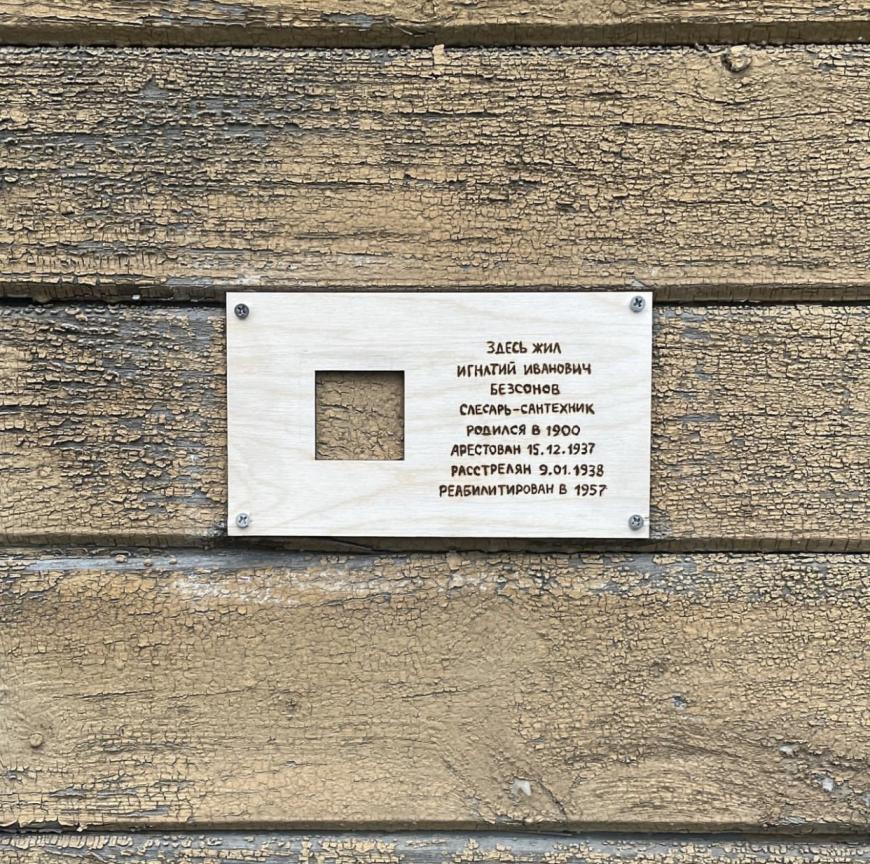published: 22 May 2024
Russian activists move to save memorials to victims of Soviet repression
In many Russian cities, local authorities have intensified their efforts to destroy name plaques marking the addresses of people caught up in the Stalinist Great Terror. Thousands of such plaques exist, set up by a widespread civil society movement called “Last Address”. Despite the campaign to destroy these sites of memory, activists are spontaneously working to restore the plaques. Memorial believes it is important to highlight these “small” acts of civic resistance.
“Last Address” is a civil society initiative aimed at commemorating victims of Soviet political repressions by installing postcard-sized memorial plaques on the buildings where these victims resided before their arrest. The initiative was proposed by the journalist Sergei Parkhomenko and has included members of Memorial in its action group.
The project's motto “One name, one life, one sign” implies that every victim is recognized by the installation of a plaque with the person’s name, profession and dates, regardless of their status or fame. From 2014 to 2020, over a thousand such signs were installed across Russia. After 2017, the project expanded across Europe, to Ukraine, Germany, Czechia, Georgia and Moldova.
Since the start of the full-scale war against Ukraine, Russian authorities have made very clear what they think of “Last Address”: plaques with names have been targeted by a growing number of acts of vandalism and organized theft.

To take an example, last September, 34 signs were taken off a single apartment building located at 61 Lesnoy Ave by the local managing company after city authorities had given an order based on an anonymous online complaint against “Memorial”. Activists have since restored all of the plaques, and they later became a memorial site honoring Alexei Navalny, after his murder.
While dozens of plaques are being dismantled, new signs continue to appear. And a Memorial project called ‘It Was Right Here’, which maps the history of Soviet terror, continues to organise tours to Last Address sites, including those where plaques have been taken down.
In Moscow, a Last Address sign was deliberately damaged at 32 Begovaya Street. It was dedicated to Mikhail Arkadiev, Moscow Art Theatre’s first director, who was murdered in 1937.
One volunteer in Saint Petersburg shared her experience restoring a sign located at 28 Grazhdanskaya Street that had been damaged with marker ink. She worked on cleaning the plaque during her commute into the city, over a period of several days. Now, the sign, dedicated to a man called Samuel Nemoitin shines bright again.

This experience made our activist look into the personal story of Nemoitin. She learned that he was a Jewish knitter, arrested for “Hasidic anti-Soviet” activities and “maintaining contact with foreign Zionist circles.”
Also in Saint Petersburg, a plaque dedicated to Ernest Seidel, a master piano tuner, suddenly disappeared. One morning in March, anonymous activists put up a new one, made of cardboard.
Memory defies any attempt to erase the “unpleasant” past. The names of people who were raided one night and were never seen again by their relatives will return again and again to the facades of their homes.
